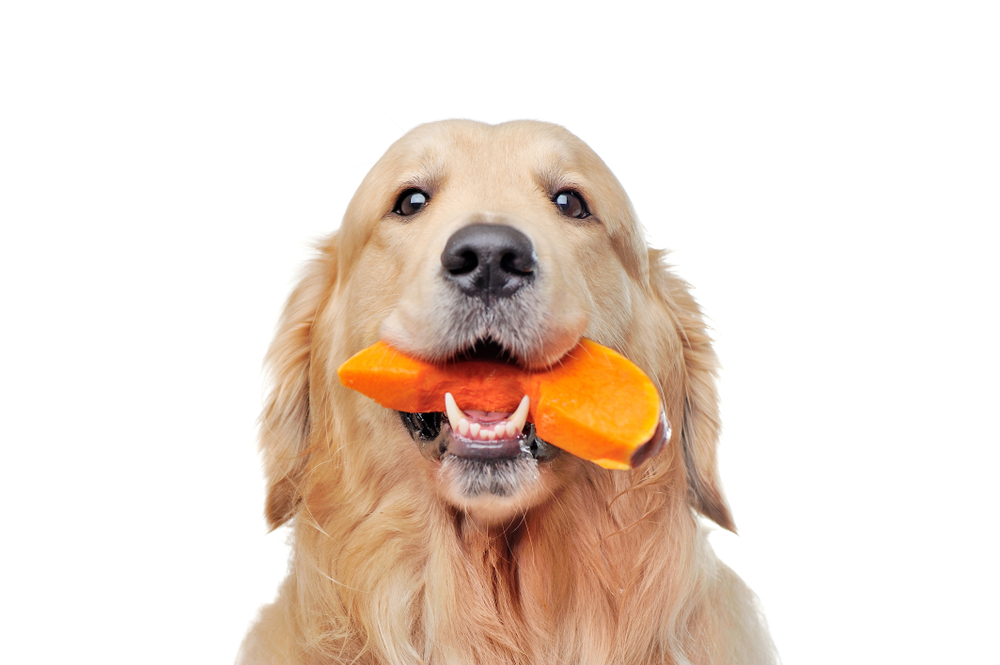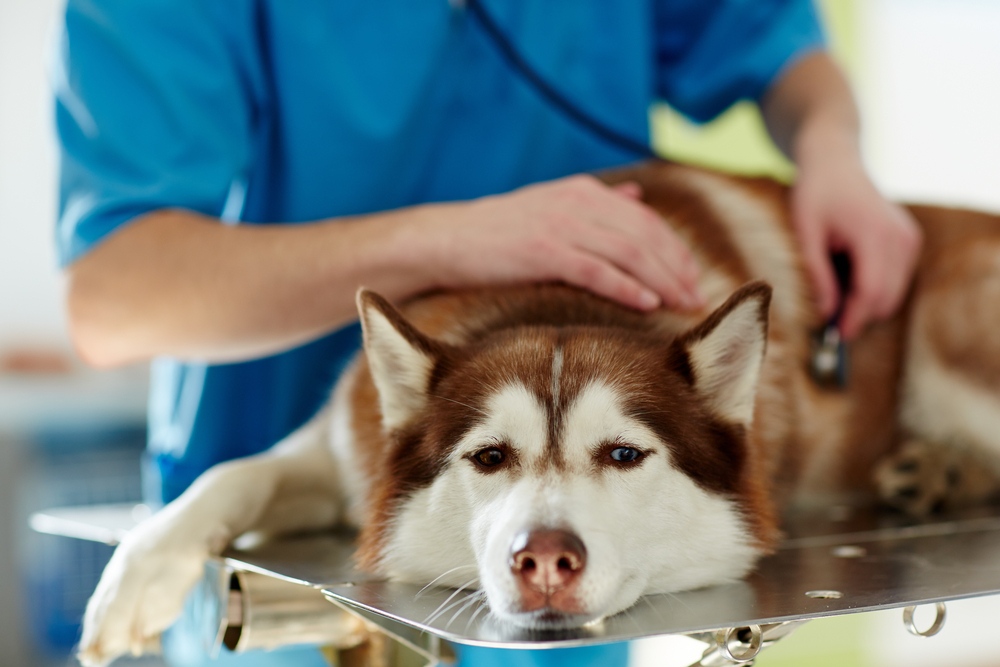Original Article: https://www.dogster.com/dog-nutrition/what-does-pumpkin-do-for-dogs
Click to Skip Ahead
Pumpkin (Cucurbita spp) is readily available, inexpensive, and easy to prepare for your dog. It is also packed full of vitamins and minerals and is considered a superfood for our canine companions. That said, you do need to be careful to ensure you don’t overfeed this fibrous squash.
Below, we look at why pumpkin is so healthy while also providing some information on how much to feed, how to prepare it, and precautions you need to take when incorporating pumpkin into your dog’s diet.


The 7 Health Benefits of Pumpkin
Pumpkins are good for people, and they are described as being a superfood for dogs. Whether you add some as a supplement or an addition to your dog’s diet or feed them as an occasional treat, these are some of the health benefits they offer. Keep in mind that your dog will get all the nutrients they need from a high-quality, balanced commercial diet.
1. Vitamin A Supports the Eyes
Vitamin A, or retinol, helps with many functions in the body and is especially good for supporting good eye health. It helps maintain the skin and immune system, and is involved in growth and reproduction. Pumpkin provides this nutrient mainly in the form of its precursor beta-carotene which gives it its bright orange color.

2. Moisture Helps Ensure Good Hydration
Pumpkins are made up of more than 90% water before cooking. The water content and digestibility increases when boiled which makes boiled pumpkin an excellent source of moisture for dogs.
Even if your dog is a keen water drinker who enjoys lapping from the bowl, an additional hydration source is not a bad thing, so mixing some boiled pumpkin with their food is a great way to increase water levels.
3. Fiber Can Help With Weight Loss
Fiber helps promote a healthy gut and it also helps fill your dog up. This means that pumpkin can make your dog feel fuller for longer, while being low calorie. Overeating is a common problem in a lot of dogs, and when our canine companions overeat, they consume more calories and put on weight.
Being overweight is a big problem for dogs, who rely on their mobility, while obesity can put additional stress on the heart and other organs in the body, as well as the bones and joints.
In addition, a high-fiber diet has been shown to help improve blood sugar regulation and quality of life in dogs with diabetes mellitus.1

4. Fiber Also Helps Encourage Healthy Stool Production
Fiber doesn’t just make your dog feel full, it also helps ensure good stool production. It can firm up diarrhea or help get constipation moving, and healthy stool formation also means less straining to toilet and healthy expression of anal glands.
There are two types of fiber in pumpkin; soluble and insoluble. Soluble is the best type for combating constipation as it acts as a natural lubricant. Even if your dog doesn’t suffer from constipation, maintaining healthy stool production is important.
5. Prebiotics Encourage Good Gut Health
Prebiotics act as a food source for the good gut bacteria that help with digestion and fight off bad bacteria. Pumpkin contains high levels of prebiotics, which help with gut health. Gut health is important, not only for healthy digestion but for a good immune system, and even a well-functioning brain.

6. Potassium Helps Regulate Blood Pressure
Potassium is an electrolyte that assists in maintaining blood volume and the acid-base balance in the body. It also helps with nerve impulses and muscle contractions. Potassium deficiencies can leave dogs feeling lethargic and not wanting to eat but these are not common on a good quality diet without any underlying diseases.
7. Antioxidants Help Keep Your Dog Healthy
Antioxidants scavenge free radicals in the body to prevent the damage they can cause and reduce oxidative stress. Pumpkin is high in carotenoids which can act as antioxidants. These antioxidants help the immune system and are thought to help fight against certain cancers too.



Pumpkin Precautions to Be Aware Of
While pumpkins do offer a lot of health benefits to dogs and can make a great additive to their regular diet, there are some precautions you need to take when feeding this squash.
1. Gastrointestinal Upsets
Too much pumpkin can cause gastrointestinal upset which leads to vomiting and diarrhea. If your pup has special dietary requirements or health issues talk to your vet before introducing pumpkin to their diet. Otherwise, it is best to introduce pumpkin slowly into the diet.
2. Other Additives Might Be Toxic
While fresh pumpkin is not toxic to your dogs, products that include pumpkin may include other potentially toxic ingredients. Savory foods that include garlic and onion, for example, could make your dog very ill. Canned pumpkin pie filling contains a lot of extra sugar which is not healthy. Always check the ingredients of any food you give your dog.



How Do You Prepare Pumpkin for Dogs?
Raw pumpkin can be more difficult to digest, so it is best to cook the squash before feeding it. Remove the seeds and bake it in the oven until it is soft and easy to chew. Alternatively, boil chunks of chopped-up pumpkin, without the seeds, before blending it into a paste.
Canned pumpkin is also a viable food source, as long as there are no harmful additional ingredients.
How Much Can You Feed?
Depending on the size of your dog you can feed between half and four tablespoons of fresh pumpkin a day. When introducing any new food to your dog’s diet, start small. You can always build up the amount you feed a little over time, but by starting with a small amount and gradually increasing it, you reduce the risk of stomach upsets and other complaints.


Conclusion
Pumpkin is a member of the squash family and is packed with vitamins and minerals. It is described as being a super food for dogs because it is nutrient-rich. It can be added to dry food as a beneficial source of moisture, or you can feed small, cooked chunks of the food as a treat.
Start with a relatively small amount per day and build up gradually over time. And, if you are feeding human foods that include pumpkin, rather than pure pumpkin, make sure it doesn’t contain any toxic or potentially harmful ingredients that should be avoided.
Featured Image Credit: gate74, Pixabay
Source: Dogster












